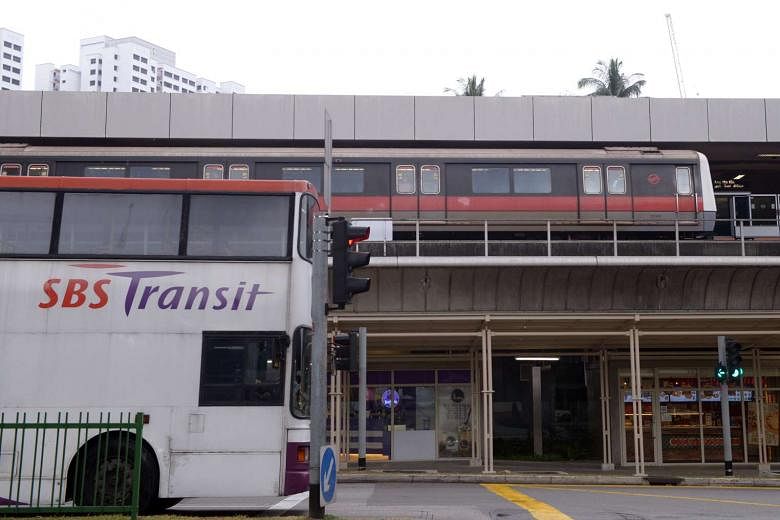Public transport fares will have their deepest cut in years from Dec 30, even as the system for calculating them is radically simplified.
Fares will be levelled down so commuters pay the same amount for the same distance, regardless of whether they hop on a train line that is underground or above-ground.
They will also be charged on the basis of the shortest route between boarding point and destination. Till now, fares have been based on the fastest travel path, not the shortest.
As a result of last year's falling oil prices, and calculated through the new system, bus and train commuters will enjoy an overall fare cut of 4.2 per cent from Dec 30, the Public Transport Council (PTC) announced yesterday. It is the biggest reduction in recent years, after 2009's fare cut of 4.6 per cent.
The last major change to the fare structure was in 2010, when distance-based fares were rolled out, helping those making transfers.
For adults using travel cards, the fare adjustments will mean savings of between one and 27 cents for a journey. Senior citizens will have their fares lowered by one to seven cents, and students by one cent across the board.
Fares for fully-underground rail lines, such as the North-East Line (NEL), Circle Line and Downtown Line, will be lowered to be the same as those for above-ground lines, such as the North-South and East-West lines.
Trips on fully underground lines currently cost five to 25 cents more for adult commuters, but this differential - to reflect higher operating costs such as air-conditioned station platforms - will be removed. This higher charge started in 2003, with the opening of the NEL.
PTC chairman Richard Magnus said commuters will benefit as more new fully underground lines are opened in the coming years.
The move will better distribute commuters across the MRT network, as some take above-ground lines only for savings, the PTC said.
"Commuters will enjoy more flexibility in choosing the most convenient travel path, without worrying they have to pay more," PTC said. This will result in commuters always paying the lowest fares possible.
The PTC is guided by a fare adjustment formula in its annual fare review. While the allowable fare reduction this year is 5.7 per cent, the PTC decided to grant only a 4.2 per cent cut out of prudence.
The remaining 1.5 per cent reduction will be rolled over to next year's fare exercise, to spread out the impact of volatile energy prices over time, the council said. Mr Magnus also noted that this prudent approach is necessary for the longer- term sustainability of the system.
The fare reduction will mean a cut in revenue of $8.9 million for SBS Transit and $34.6 million for SMRT. Revenues for bus fares, which now go to the Government under the bus contracting model, will drop by $35.6 million.
The Government will cut fares for lower-wage workers and persons with disabilities, by a level proportionate to PTC's adjustments. Concession card fares for lower-wage workers will be lowered by one to 25 cents, while those for persons with disabilities will be lowered by one to seven cents.
SEE TOP OF THE NEWS


